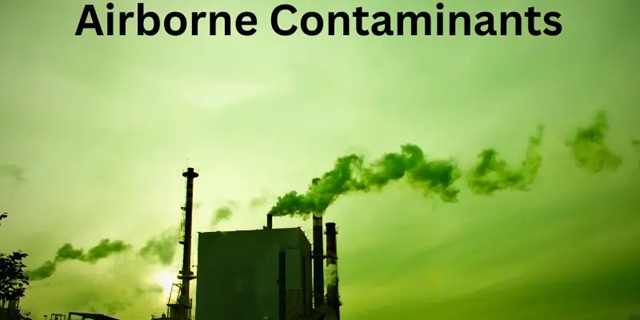Air quality plays a crucial role in our health, yet harmful airborne contaminants often lurk undetected in our everyday environments. For communities situated near industrial zones or high-traffic areas, the risks posed by air pollution are even more severe, leading to respiratory issues, cardiovascular diseases, and more.
Thankfully, advancements in detection technology and environmental solutions are making it easier to identify, monitor, and address these threats. This blog explores how emerging innovations are safeguarding communities and how environmental technology consultants are pivotal in implementing such solutions.
Why Airborne Contaminants Are a Serious Threat
Airborne contaminants can range from particulate matter to harmful gases like carbon monoxide, sulfur dioxide, and nitrogen dioxide. Two particularly concerning forms are PM2.5 and PM10 (particulate matter smaller than 2.5 and 10 microns, respectively). Due to their minute size, these particles can penetrate deep into the lungs and even enter the bloodstream, causing critical health issues.
Major sources include:
- Vehicle emissions: Traffic-dense areas see higher occurrences of pollutants like NO2.
- Industrial operations: Factories and power plants release particulate matter and harmful gases.
- Wildfires and natural events: These contribute to sudden spikes in harmful contaminants.
For communities regularly exposed to these pollutants, the impacts extend beyond personal health, influencing local ecosystems, living conditions, and quality of life.
Innovative Methods to Detect Airborne Contaminants
Real-Time Monitoring Sensors
Small but mighty, real-time sensors identify air pollutants instantaneously. These tools measure particulate matter (PM2.5, PM10) and harmful gases, providing actionable insights for contamination hotspots.
- Applications: Schools, residential districts, and outdoor public spaces use these sensors to ensure air safety.
- Advantage: Data is available in real-time, empowering quicker interventions when pollution levels spike.
IoT-Connected Monitoring Networks
The Internet of Things (IoT) is transforming air pollution management. Imagine thousands of interconnected sensors across a city, delivering a comprehensive map of air quality at any given moment.
- Why it matters: Governments and city planners use this data to create pollution mitigation protocols.
- Bonus: Businesses like environmental technology consultants analyze these data streams to help industries reduce their environmental impact.
Satellite-Based Surveillance
Satellites equipped with advanced spectrometers are now capable of monitoring air quality on a macro scale. These systems collect data about contamination levels over entire cities or countries.
- Example in action: NASA’s TEMPO satellite, with hourly updates that can help shape effective public health interventions.
- Who benefits: Researchers and policymakers targeting regional causes such as vast industrial zones or wildfire-prone areas.
AI-Driven Predictive Models
Artificial intelligence (AI) combines various sources of pollution data (sensors, satellite imagery, etc.) to predict future trends. For example, AI can forecast spikes in pollution based on weather or traffic patterns, giving organizations time to act.
- For businesses: Predictive analyses inform proactive measures to align industries with environmental regulations.
Drones for Hard-to-Reach Places
Equipped with air sampling sensors, drones minimize the labor-intensive process of pollution measurement in industrial zones, wildfire-damaged areas, or other hazardous environments.
- Key impact: Drones reduce costs while boosting safety for air quality assessments.
- Added efficiency: These airborne devices act faster than manual assessments, saving critical time in emergencies.
The Benefits of Proactive Air Quality Measures
Safeguarding Public Health
Whether through real-time monitoring or satellite surveillance, detecting air contaminants before they reach hazardous levels is vital to preventing disease and supporting healthier communities. Reducing exposure to contaminants can drastically lower related hospitalizations and deaths.
Reducing Inequities in Air Pollution
Historically, low-income areas have faced the greatest exposure to pollution due to proximity to highways, factories, and industrial zones. With innovative monitoring systems, targeted solutions can now provide the necessary safeguards directly to those who need them most.
Promoting Cleaner Industry Practices
Transparent air quality data encourages industries to adopt cleaner technologies, improving their compliance with environmental standards. Businesses working with environmental technology consultants often find it easier to align their practices with both regulations and their customers’ increasing expectations for sustainability.
Every Community Deserves Cleaner Air
The fight against harmful airborne contaminants is one we can win, but it requires the collaboration of industries, governments, and local communities. New detection technologies and comprehensive strategies don’t just improve health outcomes; they ensure a healthier environment for generations to come.
If your organization is ready to be a part of this positive change, consider enlisting the help of environmental technology consultants. They can provide actionable insights, cutting-edge tools, and tailored advice to protect your community while staying competitive and compliant.










